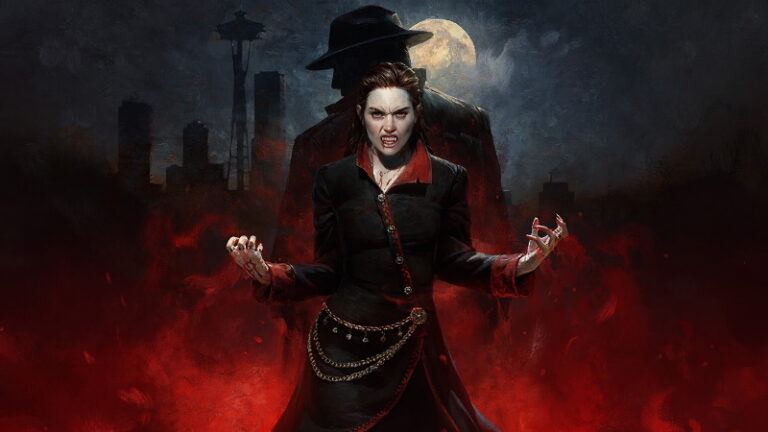This review is something rather special for me. I never got a chance to review Resident Evil 4 when it was originally released in 2005 on the Gamecube. I wasn’t a part of this site back then– when it used to be known as reHorror (a name I’ve brought back for this weekly feature). But now, as Editor-in-Chief of said classic site’s complete evolution– into Rely on Horror– I can tackle things I wasn’t able to years ago. Reviewing Resident Evil 4 is one such thing. And now, with the release of Resident Evil 4 HD, I have that golden opportunity. So, having said that, I want to make it clear that with this review I’ll be actually approaching it as if I was reviewing the game back when it first launched in ’05, because HD or not, this is still the same survival horror masterpiece it’s always been. The difference now is that Capcom’s fortunately broadened its reach into the current generation of HD consoles, while making everything look nicer in the process. But what makes Leon’s second major outing such a classic? Find out below.
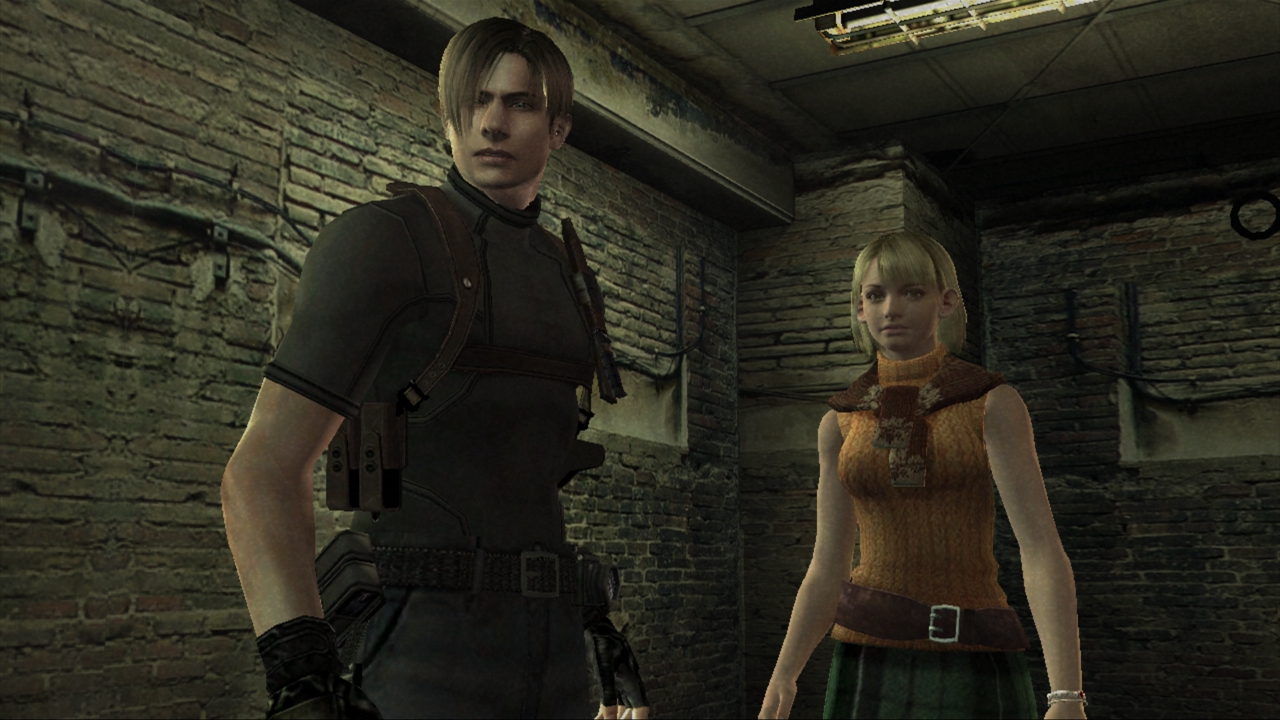
After surviving the T-Virus outbreak in 1998’s classic, Resident Evil 2– which also happened to be his first day as a cop– Leon S. Kennedy returns in Resident Evil 4. And once again, he finds himself knee-deep in yet another conspiracy, facing a deadly, parasitic threat (Las Plagas). All of this is wrapped around Leon’s actual mission, under direct orders from the president of the US, that he was sent on in the first place: to locate Ashley Graham (the president’s daughter) in a remote, European village and ultimately bring her back to her comfortable, presidential home. That turns out being easier said than done, as Leon soon finds out.
It’s not exactly a plot that’s to be met with loads of writing accolades by any stretch of the imagination, but that really doesn’t matter when it’s executed as good as it is in the game. Sure, the dialogue consists of the classic cheesiness one normally expects from Resident Evil games (especially the classic ones), but it adds a sense of humor to what’s an otherwise grim and moody experience. And come on, it just wouldn’t be Resident Evil with at least a handful of corny one-liners– which Leon delivers with a sense of mastery. And, as aforementioned, the plot progressively unravels from a generic rescue mission to an overarching conspiracy threatening the very country Leon’s serving with this new parasite, Las Plagas, that brings about an entirely new set of humanoid, enraged enemies (more on this later). No spoilers here, of course, but I strongly see Resident Evil 4’s tale as one that could completely live and breathe outside of the series’ overall, established canon– hell, if it wasn’t for the recap in the game’s intro, and the inclusion of Leon and a particular lady in red, this could’ve easily been a complete spin-off tale.
But alas, Resident Evil 4 serves as a sequel to the original trilogy, and at the same time provides one complete evolution of the gameplay mechanics that once made up a Resident Evil game.
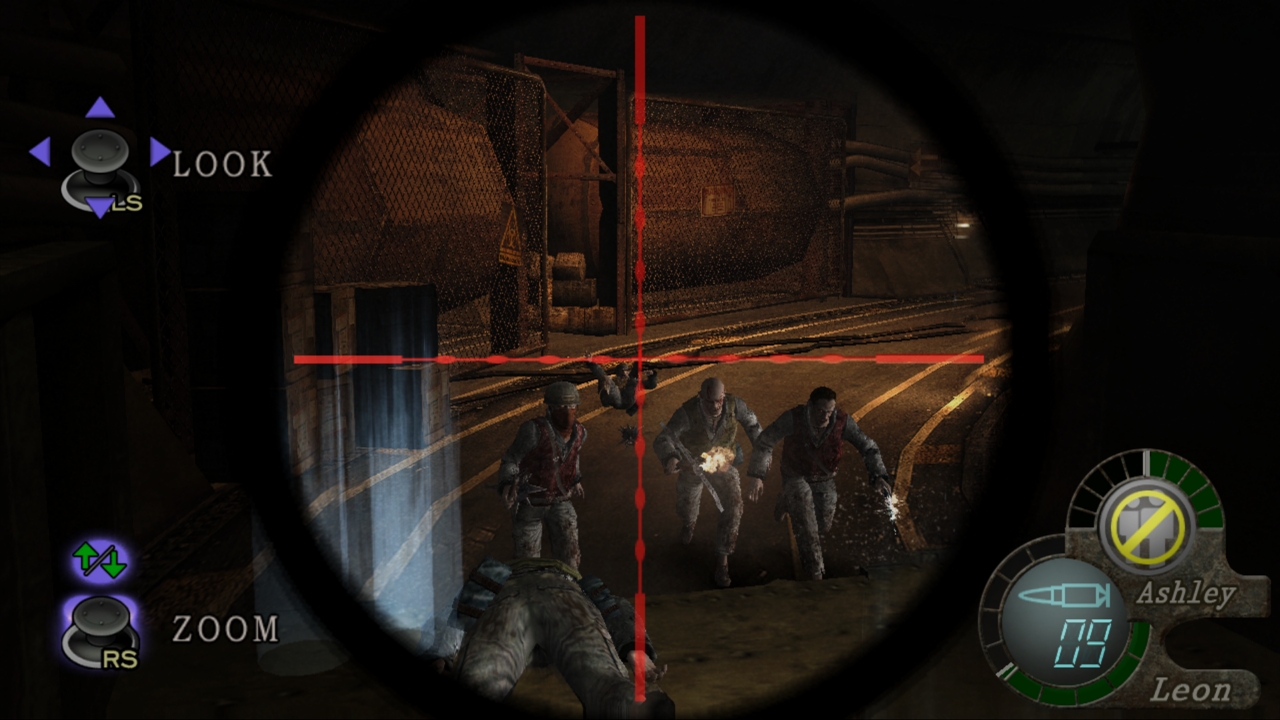
Right from the very beginning, in the game’s tense opening moments, we’re not only introduced to an all-new threat to confront, but we’re also introduced to a whole new way of playing Resident Evil. Gone were the cinematic, classic camera angles, as well as the tank-like controls. Now, players were granted complete freedom as to where to direct fire, as well as a better sense of movement throughout the game’s fully-3D environments (a complete shift from the classic games’ pre-rendered backgrounds). Want to– in classic zombie fashion– go for the head? Or perhaps you want to be a bit more strategic and shoot foes in their legs and follow it up with one of Leon’s close-quarters melee attacks– from simple kicks to gory suplexes. Or perhaps you’ll opt to shoot the sharp weapons off of enemies’ hands to diminish a bit of their threat level. You can do all this now with the new, and at the time revolutionary, over-the-shoulder camera/aiming system Mikami introduced with this game– which then paved the way and set the standard for modern third-person shooters like the Gears of War series.
As one could imagine, such a drastic change in gameplay mechanics certainly led to a more action-oriented approach. This was exactly the case. But the game still stayed true to its genre and it definitely lived up to the very meaning of “survival horror.” With this new gameplay system in play, we were now confronted with much more enemies than we’ve been accustomed to in previous entries. With more precision being possible in one’s aiming, the developers complemented this by throwing hordes of Ganados(the game’s new non-zombie enemies) at the player, which included your standard villagers, zealots and even armored soldiers late in the game– amongst other enemies. Yeah, it sure was a complete departure from being confined in small hallways/rooms having to fight off a few slow-moving zombies, but that’s what made the experience even better, always keeping players at the edge of their seat. And Resident Evil 4 wasn’t allergic to ‘variety’ either with intense sequences like an on-rails cart segment as well as a classic “board up all the windows and doors” scene in a cabin where Leon and Luis had to fight hordes of Ganados. Yeah, pretty intense stuff.
All of these elements are masterfully wrapped in one very frightening and eerie atmosphere which ranks amongst the best the genre has to offer.
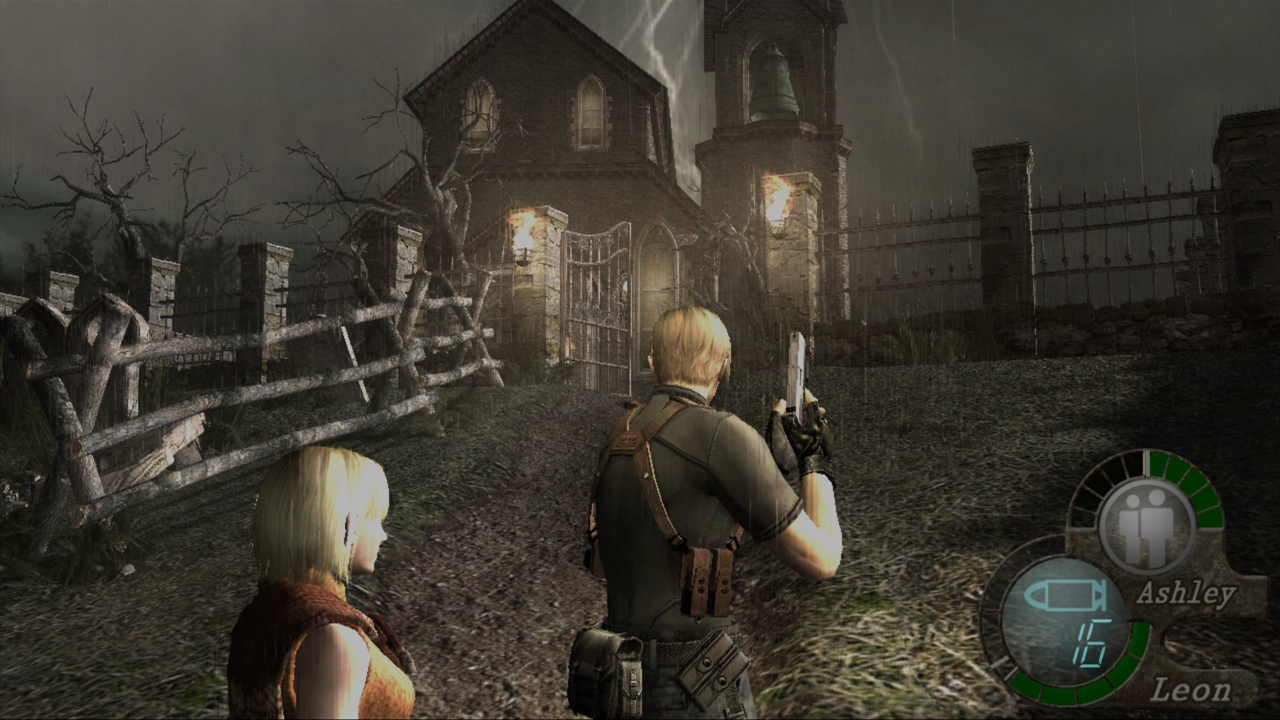
Resident Evil, as a series, has many components that make each game true to what fans expect, on an entry-by-entry basis. As aforementioned, Resident Evil 4’s new gameplay mechanics took series’ loyalists by surprise and send them back to square one– to get accustomed to a new, refined way of playing and traversing through the game’s world. The latter of which is just as important as the gunplay– because even the quiet moments in the game are downright superb. When it comes down to it, you can’t really have a “REal” Resident Evil game without a strong setting as a backdrop to all the BOW-slaying, herb-collecting, one-liner laying that each game provides. And Resident Evil 4 fits the bill perfectly.
The game, taking place in Europe, will initially pit you in an eerie, rural village where you’ll quickly get acquainted with the game’s new enemies– Los Ganados. The developers weren’t content with just keeping the scenery limited to one locale, though, and it changes at a gleeful pace so as to not making the player get tired of any one given area. The game’s set of backdrops will have you traversing a sprawling Castle, a hedge maze, ruins and even a militarized island late in the game. Hell, you even make a trip back to the initial village, though this time it’s night and rain is pouring down– a particular, Ganado-infested, segment that serves as one of the finer examples that beautifully paints the atmosphere as the work of art it is. Other glowing examples come when you’re roaming through rooms and and you hear a distinct type of breathing that comes from the one and only Regenerator (one of the most terrifying enemies in the game, at least in this reviewer’s opinion). The art and sound design at play here mesh beautifully to create one visually and aurally unsettling experience that helps elevate the game to the top of the survival horror pantheon.
Oh, and did I forget to mention the epic boss battles that are as sprawling as the environments Leon traverses?
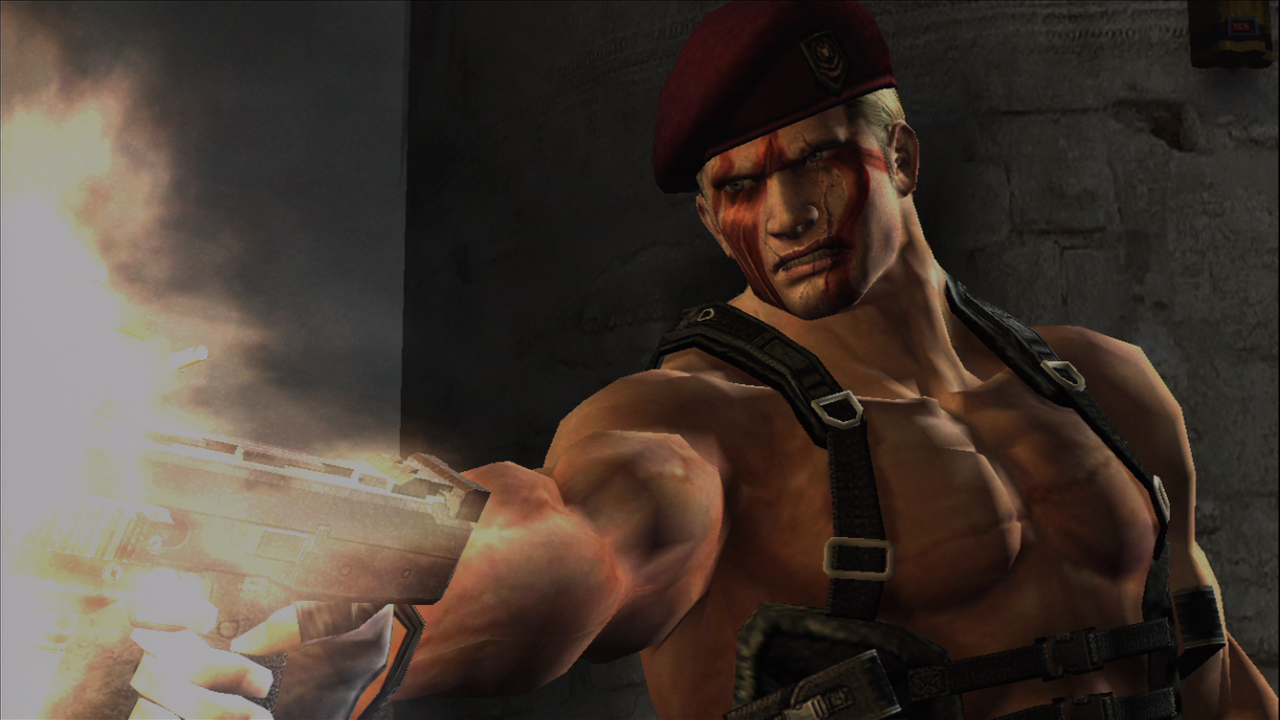
The boss battles in this series have always been key elements in each game. From the classic Tyrant in the original to the memorable battles with William and Nemesis, the series is no slouch when it comes to big baddies. Resident Evil 4 is no different. Actually, the only real difference is that now, with this game, the boss fights are on a larger scale– and every boss bests the one that came before (except the final boss, which felt a bit weak when compared to the previous bosses). From a battle with Del Lago (a giant sea monster at the heart of a lake you’ll reach early on in the game) to a battle with El Gigante who towers over Leon, Resident Evil 4’s boss battles will put your skill to the test and some also make good use of QTEs.
The game itself has many QTEs (quick time events) interspersed throughout the lengthy 15-20 hours adeventure, and they serve to enhance battles you’ll have with several bosses– the most notable one being Krauser, Leon’s old comrade. Fighting Krauser for the first time is one of the best examples of the game’s flawless execution of bosses. In their first encounter, the battle itself is entirely composed of QTEs in which both Leon and Krauser exchange knife swipes back and forth. It forces you to always keep your hands on the controller, ready for any button prompts to pop-up on screen– and this also carries itself throughout many of the game’s cut-scenes, so don’t put that controller down! Basically, if you’re terrified by the new enemies introduced in the game (especially after being used to classic zombies), then the bosses here will truly lead to a change in garments. Oh, and when you first reach the lake where you fight Del Lago, make sure to shoot at the water! You’re welcome.
Going back to the notion of “not putting the controller down,” that very act is something that’s going to be quite easy to accomplish, because the game also has extra things to take on that will greatly extend your time with it. And it doesn’t end once the credits roll…
The overall Resident Evil 4 experience consists of more than just seeing the expertly paced narrative the whole way through, you also have loads of collectibles and weapons to get your lady-friendly hands on. To complement the new gunplay system introduced with the game, players have a healthy selection of weapons at their disposal. You start out with your standard, classic handgun and quickly find a shotgun. Then, not too long after, you meet the game’s appropriately named, Merchant. This (immortal) being meets Leon on numerous occasions throughout his adventure– it makes you stop and wonder just how this mysterious man is getting around from place to place, let alone how he keeps coming back to life after you shoot him point-blank in the face. The Merchant allows you to upgrade your weapons in various departments–reload speed, power, ammo capacity, etc.– as well as purchase new weapons entirely. But don’t worry, if you don’t get a chance to fully max out all your weapons, or collect all of them, you’ll still have a chance once you beat the campaign.
Once the credits roll you’ll still have more than enough extras to take on if you so wish– and trust me, you will most definitely want to. Firstly, if you didn’t get a chance to fully upgrade all your weapons in your initial playthrough– another new feature not seen before in the series– you have the chance to do just that after clearing the game by starting a new round– or in simpler terms, new game plus. Here, as one would imagine, all your items and weapons carry over to the new playthrough, giving you a chance to fully max out everything and collect (and sell) every last valuable scattered about the various environments. But maybe you want a boost in difficulty to complement your “second round.” Well, you can do that too. The game has a few difficulty levels, with professional (the highest) being for those looking for a challenge akin to the series’ classic entries where you would constantly find yourself at a loss of ammunition or health supplies– in Resident Evil 4 that happens in this mode because the enemies get a big boost in damage resistance. So, if you want a more classic experience, I recommend doing Pro’ mode as a new game completely, so none of your previous items and weapons get carried over.
But wait, that’s not all there’s to do after beating the game. Oh, no, there’s much more than that. And it’s all thanks to a beautiful woman in red.
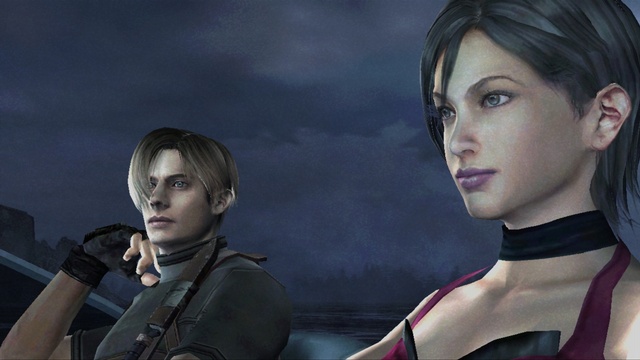
When the game first saw release on the Gamecube, players who cleared it all the way through were then met with a couple of extras that each served to extend the game’s replay value. Those two extras came in the form of Assignment Ada and the Mercenaries. The latter took what was introduced with Resident Evil 3 and turned it into an even bigger affair, with unlockable characters and maps to take on. Mercenaries catered hugely to those who love the thrill of besting their own high scores, and you could easily find yourself sinking hours into just this one extra mode alone. But then you had Assignment Ada to take care of as well, which was a more story-oriented extra than Mercs’. In this extra scenario players took on the role of Ada Wong (returning from Resident Evil 2) as she’s tasked by none other than Wesker himself to retrieve several Las Plagas samples scattered around the militarized island area in the game (with the armored foes). It’s all about survival here as enemies will come at you in large numbers, so you best watch Ada’s beautiful ass. Then you have the PS2 extras.
Aside from extra costumes for both Leon and Ada, and a special laser-like weapon that’s unlike any other weapon we’ve seen in the series to date (making it feel somewhat out of place), players also got yet another extra scenario to tackle– this one being much meatier than Assignment Ada, but still starring everyone’s favorite woman in red. ‘Seperate Ways’ once again put players in the role of Ada, this time, though, we were actually seeing her side of the game’s story. Remember the bell that was rung in the beginning of the game where Leon was faced with hordes of villagers (and one very angry chainsaw-wielding Dr. Salvador)? Yeah, Ada was the one who rang that bell. I won’t delve into spoiler territory here, but this extra scenario is quite an enjoyable standalone experience in and of itself, taking a few hours to beat, with no real new areas to explore other than a battleship stage that’s exclusive to this scenario. Oh, and the final boss battle at the end is quite epic.
But now let’s shift gears to the actual remastered, HD version of this survival horror gem, which is what this review is technically about anyway.

Now, here’s where I may get some strong critcisim from a good number of readers. But hey, I am offering my 100% honest opinion on this game as a whole. Technically, Resident Evil 4 HD is an upscaled version of the Gamecube/Wii build. It’s not a full-blown remake, obviously, nor was it ever meant to be. Having said that, this remastered version isn’t really all that “HD” to begin with, but should that even matter? Yeah, the visuals are smoother and everything looks slightly better than the aforementioned source builds, but it’s nothing drastic like the upcoming ICO/Shadow of the Colussus collection or more notably the Metal Gear Solid HD Collection. But I really don’t see that as a problem whatsoever. Yeah, there’s some minor issues like somewhat muffled sound and the way the buttons have been mapped may not be to everyone’s liking, but Capcom fortunately opted to not mess with the visuals completely– which to some may be an issue itself. But I see this “faithfulness” to the original release’s look to be really nice.
Let’s face it, the developers were already pushing the limits of what the Gamecube could do with this game, and it all paid off beautifully. The art design is key here, and it all led to one very effective and amazing atmosphere. With this remastered version we’re getting a slightly cleaner version of said original build. If Capcom were to go back and sort of start from scratch with the visuals then they would be messing with some art design choices that were made, leading to the atmosphere possibly being affected. And the fact that the game still looks good by today’s standards, despite receiving what most people are now saying is a “half-assed port,” is a true testament to the art design here. For me, the true charm of this HD version is that now it’s available to a wider audience. Yeah, if you have a backwards-compatibly Playstation 3 then you could just whip out your Playstation 2 port of the game, but not everyone has these PS3s. Then you got the Xbox 360 version that’s just a complete blessing to owners of that particular platform, who haven’t been able to experience this classic game at all. Now, everyone has a chance to delve into one of the finest adventures within the survival horror genre.

Resident Evil 4 HD to some may not be worth it due to their expectations of this being a much nicer-looking package– especially with HD proudly attached to the end of the title. But in the end, I truly see this serving as the definitive version of the game that now has broadened its reach into this current generation of HD consoles. Yeah, if you have a Wii and own either the motion-controlled Wii edition or even the original Gamecube release, you could just go on just fine with that. But to those who own the current HD consoles (and don’t own a backwards-compatible PS3) then this is a blessing to one’s hard drive (or disc drive if you have the Japan-exclusive Revival Selection). For $20 (or $10 if you’re a Playstation Plus member) you’re getting one of the absolute best games of the last generation, that still holds up to this day. And that’s saying a lot about this game. Resident Evil 4 is a timeless classic that has done to third-person shooters what Super Mario 64 and Legend of Zelda: Ocarina of time did to platformers and action-adventure games, respectively, all those years ago. This deserves nothing less than the highest score possible.
 (9.5 / 10)
(9.5 / 10)
Amazing
 (9.5 / 10)
(9.5 / 10)
 JBoc924
JBoc924

